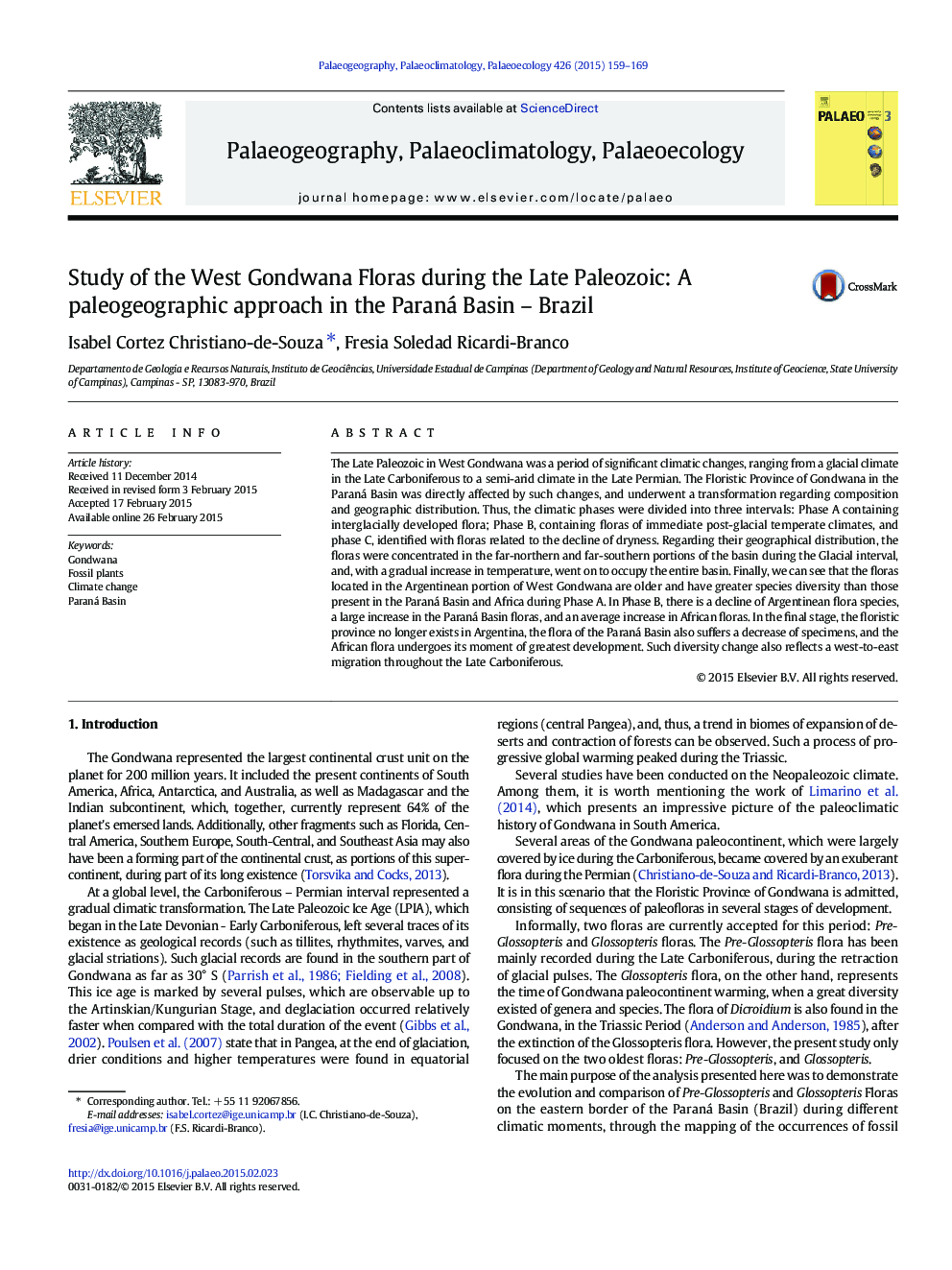| کد مقاله | کد نشریه | سال انتشار | مقاله انگلیسی | نسخه تمام متن |
|---|---|---|---|---|
| 4465989 | 1622164 | 2015 | 11 صفحه PDF | دانلود رایگان |
• Late Paleozoic climate change in SW Gondwana under a paleofloristic point of view.
• Geographical Information System for plant fossil paleographical distribution.
• Distinct features for each climate moment.
• Warmest and driest climate has less diversity than the interglacial periods.
• Flora has different characteristics compared to other locations in the West Gondwana.
The Late Paleozoic in West Gondwana was a period of significant climatic changes, ranging from a glacial climate in the Late Carboniferous to a semi-arid climate in the Late Permian. The Floristic Province of Gondwana in the Paraná Basin was directly affected by such changes, and underwent a transformation regarding composition and geographic distribution. Thus, the climatic phases were divided into three intervals: Phase A containing interglacially developed flora; Phase B, containing floras of immediate post-glacial temperate climates, and phase C, identified with floras related to the decline of dryness. Regarding their geographical distribution, the floras were concentrated in the far-northern and far-southern portions of the basin during the Glacial interval, and, with a gradual increase in temperature, went on to occupy the entire basin. Finally, we can see that the floras located in the Argentinean portion of West Gondwana are older and have greater species diversity than those present in the Paraná Basin and Africa during Phase A. In Phase B, there is a decline of Argentinean flora species, a large increase in the Paraná Basin floras, and an average increase in African floras. In the final stage, the floristic province no longer exists in Argentina, the flora of the Paraná Basin also suffers a decrease of specimens, and the African flora undergoes its moment of greatest development. Such diversity change also reflects a west-to-east migration throughout the Late Carboniferous.
Figure optionsDownload high-quality image (188 K)Download as PowerPoint slide
Journal: Palaeogeography, Palaeoclimatology, Palaeoecology - Volume 426, 15 May 2015, Pages 159–169
